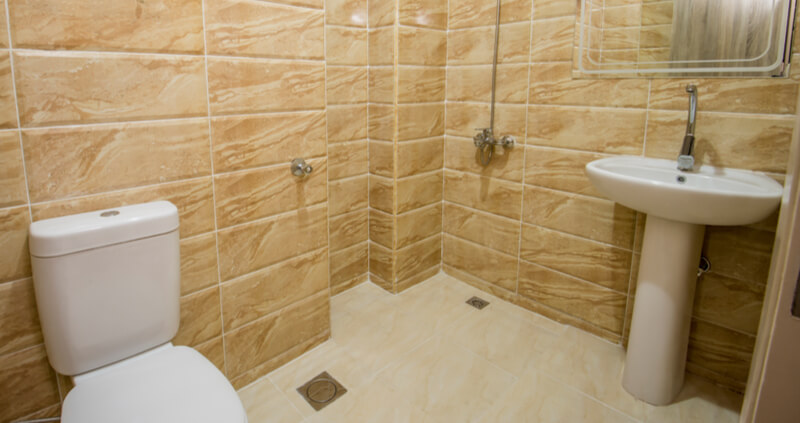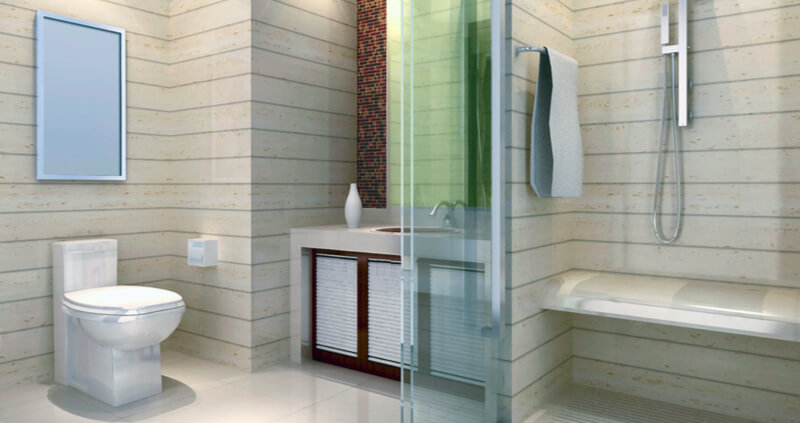
It doesn’t take long online to find plenty of horror stories about wet rooms leaking. With a quick Google search you will find tales of ruined ceilings, damaged walls and the obligatory flooded rooms. The question is, do all wetrooms really leak?
The simple answer is no, as properly installed wetrooms are just as water tight as a bath or a traditional shower enclosure. The key word in that last sentence is “properly”. Wetrooms that leak are almost always installed by improperly trained bathroom fitters or home owners who think they can save money by installing a wetroom themselves. In reality, installing a wetroom is a more complex job than simply installing a shower cubicle, and a novice can easily make a mistake without ever noticing it until they have a very big puddle on their hands.
What Causes Wetrooms to Leak?
There are a few factors that can cause wetrooms to leak, but the common theme is that of improper installation of one of more elements.
1. Improper Waterproofing
The main cause of leaks is down to improper waterproofing. Before you lay down that beautiful tile or install the amazing new shower head, you will need to waterproof or “tank” the wet room. This involves encasing the entire shower area from the floor all the way to the top of each wall with a waterproof membrane. In addition, all wall/ floor junctions and corner junctions that come in contact with water will need to be waterproofed too. Tanking is the key to a watertight wetroom and needs to be carried out precisely. If you do a poor job of waterproofing, you are almost guaranteed to get a leak.
2. Poorly Installed Floor Formers or Decs
Another common cause of leaks is down to inadequately installed floor formers or decs. Wetrooms built on timber floors will usually be constructed using a floor former to form the gradient or fall. A built-in gradient allows the water to be guided to the drain. It also provides a stable surface to support both the flooring and the bather. The most common reasons for a dec failing are poor support and a bad plumbing connection. To ensure a wetroom dec doesn’t move or flex, it’s important that joists are sturdy and that the dec is ply lined for extra support.
3. Inappropriate Drainage
Leaks can also be caused by inappropriate drainage. If you use an inexperienced wetroom fitter to install your wet room, they may install a drain that can’t cope with the flow rate of the shower. This means the shower pumps out more water than the drain can remove and causes standing water to back up in the wet room. If this water makes its way beyond the tanked area of the bathroom, it can cause a leak.
4. Poor Tiling
The final common cause of wet room leakage is due to poor tiling. Tiles that are inadequately fixed to the wall or floor can lead to water seepage beneath them, which in time will cause them to loosen and lift and ultimately leak. To ensure that this doesn’t occur, it is important that tiles are fixed onto a 100% bed of adhesive which will hold the tiles tight and prevent water penetrating beneath them.

Should I Get A Wetroom?
You should absolutely get a wetroom! They add value to a home and are a great alternative to traditional showers or baths. You just need to make sure that the person installing it is a qualified installer with proven wetroom installation experience. A correctly installed wetroom can provide a low maintenance, barrier free bathing solution that will last for decades, or until you decide to update your tiling.
If you are interested in installing your own wetroom and are looking for some advice, contact CCL Wetrooms today.









